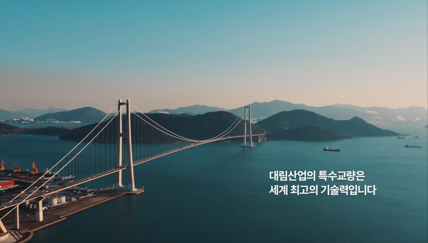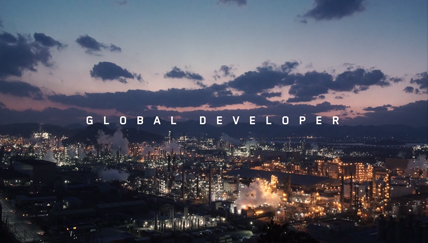“Pouring concrete at -100C without warm curing” DL E&C’s ‘cold-resistant concrete’ was certified as a new construction technology by MoLIT
DATE 2024.08.06
VIEW 269
“Pouring concrete at -100C without warm curing”
DL E&C’s ‘cold-resistant concrete’ was certified as a new construction technology by MoLIT
 ‘Cold-resistant concrete’ is being poured at a DL E&C’s construction site in Korea.
‘Cold-resistant concrete’ is being poured at a DL E&C’s construction site in Korea.
 ‘Cold-resistant concrete’ is being poured at a DL E&C’s construction site in Korea.
‘Cold-resistant concrete’ is being poured at a DL E&C’s construction site in Korea. - It is possible to pour concrete at -100C without warm curing, using anti-freeze substance.
- It is possible to improve quality, reduce carbon emissions and prevent suffocation.
- It is possible to improve quality, reduce carbon emissions and prevent suffocation.
- Obtained a certification for new construction technology from MoLIT, “continuous development of differentiated technology”
DL E&C announced on the 6th that it’s ‘cold-resistant concrete’ developed for the first time in Korea in collaboration with Sampyo Industries has obtained a certification for new construction technology from MoLIT (the Ministry of Land, Infrastructure and Transport). The cold-resistant concrete is the only winter-season concrete in Korea that can be used even when the temperature drops to -100C.
Conventional concrete used at construction sites is likely to freeze when the temperature drops below zero, making it impossible to pour using the standard method. Therefore, during winter, ‘warm curing’ is carried out using devices like hot-air blowers and heaters in order to maintain a certain temperature until the poured concrete is completely hardened.
However, this method poses challenges. Temperature variations can lead to improper curing, preventing the concrete from achieving its intended strength, or causing partial overheating that results in thermal deformation and cracks. Additionally, using hot-air blowers or heaters increases the risk of asphyxiation accidents among workers.
To address these problems, DL E&C, in partnership with Sampyo Industries, developed cold-resistant concrete. They used cold-resistant accelerators and stimulants having anti-freezing effects to devise a concrete technology that can be used in winter without additional warm curing. The technology recently obtained a ‘certification for new construction technology’ from MoLIT. This certification system certifies new construction technologies that are either developed for the first time in Korea or improved the conventional technologies, as well as deemed to be novel, advanced and applicable to the sites.
In practice, the cold-resistant concrete achieves its design criterion strength 28 days after pouring without any problem and without warm curing. As construction can be carried out even in severe cold, it is possible to secure uniform quality while shortening the construction period. There is no need for the use of hot-air blowers or heaters, which removes asphyxiation risks, and reduces carbon emissions and consumption of fossil fuels.
An official from DL E&C said, “Our differentiated technology for innovating quality obtained a certification for new technology from MoLIT. We will continue to overcome the limitations and challenges of existing construction technologies to lead the industry.”






